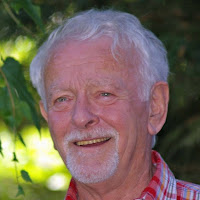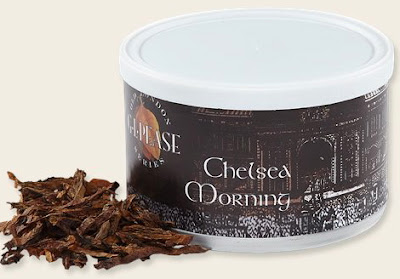In his inaugural message, the Society’s new president encourages
the reader to take on Freemasonry like a discipline to study and master. It’s
an activity. While every member of the Masonic Society obviously has a desire
to learn about his fraternity, the next simple step is to undertake even a
modest personal investigation into what it all means. “Every answer found within
Freemasonry begins with a question,” he writes. “Did you know that you can look
up an answer to a question you have?”
Writing from his desk, Editor Poll asks “Is
Freemasonry a Moral Philosophy?” Such thinking, he says, “is understood as a
component of philosophy dealing with ethical questions of living and
interacting with others.” He quickly decides that, yes, the Craft does impart a
moral philosophy, citing the Hiramic legend as the obvious example, but he
concludes our Order’s shortcoming is in how we teach the lessons but promptly
jump to something else. “It is like having a glass of fine wine and gulping it
down in one large mouthful.” But there is no easy fix either, he explains. “We
should recognize that integrity is more than a word and that Freemasonry is far
more than a club. We should become what our teachings say we should be.”
 |
| Secrecy, Ciphers, Codes, and Hermeneutics |
My fellow New York City Mason John Beatty of Schiller Lodge
304, professor emeritus at Brooklyn College, invites us into the world of
“Secrecy, Ciphers, Codes, and Hermeneutics.” In addition to explaining the
differences among these systems, Beatty walks us through the process of making
sense of their workings—and does so in a fun and engaging style that brings in
examples from literature and film to illustrate what he means. There are
reasons why Masonic codes have been discarded, but Masonic symbols endure. Read
his findings to find out more.
Masonic Society Founding Fellow and former Board member Mark
Tabbert is director of collections at the George Washington Masonic National
Memorial in Virginia, and in these pages he illumines the “Lighthouse of
Freemasonry.” This beacon is the Memorial itself which, Tabbert recounts, is
modeled on the lighthouse of Ostia of ancient Rome, but serves the Craft today
as “the light of George Washington’s character, the light of Freemasonry…the
light that calls good men to be better.” Mark’s essay is of special interest to
Ohio Masons, as he provides a history of how the Memorial was highly cherished
and supported by the brethren of that state.
My friend W. Bro. Marty Bogardus, senior warden of New
Jersey Lodge of Masonic Research and Education 1786, treats us to a think piece
titled “The Tipping Point of Freemasonry,” which takes an unflinching look at
the danger that could befall any of us, should the function of our rituals lose
their urgency, in our minds, and become mere form. “To rekindle our love affair
with Freemasonry, we must continually witness the conferring of every degree
through the eyes of one who has just knocked at the door of Freemasonry.” Amen,
brother.
Bro. Mark St. John, senior warden of Urim (what a name!)
Lodge 111 in Louisiana, reveals to us “The Ashlars of the Temple,” which is full
of lessons describing the realities of life in the fraternity. Just as there
are obvious differences between rough stones and hewn, and between ashlars used
for constructing exterior walls and interior walls, so too are there
differences among Free and Accepted Masons themselves. “It is important that a
Brother find his place and be given the ability to excel, all while acting by
the character shaped for him by our ritual and lessons.” (I wish someone had
been there to advocate for me like this 20 years ago!)
The taboos inherent in updating Masonic classic books are
overcome by The Journal’s Book Reviews Editor Michael Moran and Bro. Seth
Anthony, both of Pennsylvania. Using a book from 1985 titled The Exemplar: A Guide to a Mason’s Actions written by then Pennsylvania Grand Master William A.
Carpenter, the brethren cited the methods they employed to make the text sound
right to the modern ear, and listed a number of specific revisions they made in
that process. Success was achieved by respecting the original writing, while
also bringing additional cooks into this editorial kitchen. Good for them on
enhancing an existing educational text for today’s Masons!
In the Travel section, Masonic educator par excellence
Michael Poll tells us of his recent trip to a Grand Lodge of Alaska
communication. (The Masonic Society’s third president was MW Bro. Bo Cline,
past grand master of that jurisdiction.) Michael was invited to speak there,
but he listened a lot also, concluding that this grand jurisdiction is doing
what the thinking Mason would want. In music, he says, “you can hit all the
right notes and keys, but without feeling, it’s empty… [and] I felt something
very strong in the Grand Lodge of Alaska.” You can trust Mike on this one—he
is a descendent of Beethoven, and he once jammed with Chuck Berry!
TMS Founding Fellow and Masonic éminence grise Tom
Jackson of Pennsylvania also was in Alaska with Mike, and the text of his
speech to the grand lodge rounds out the features of this issue of The Journal.
If you’ve ever heard Tom speak or are familiar with his writings, you know
candid commentary and brotherly tough love gird his presentation. In “Masonic
Education: Looking to the Future,” tells us again that education is key to
making Freemasonry in the United States stable and viable. It is learning that
builds the foundation of the useful individual Mason, and it is the learned
individual Mason who makes the lodge that will be there for the next
generations, and that lodge will benefit the world. “Historians are finally
acknowledging the influence that our Craft has had on some of the greatest
leaders that the world has ever known at a time when we are failing to educate
our own membership of this influence,” Jackson admonishes. “Instead of trying
to raise our standards and to improve our image in society, we continue to
reduce our standards and to lower the requirements to become a Mason and to
remain a Mason.”
“This world truly needs an organization based upon a
foundation of the philosophical purposes of Freemasonry,” he adds, concluding
on a hopeful note. “If we are deserving of our heritage, then we must undertake
a program of educating ourselves and our membership.” (I am envisioning every
member of the Masonic Society saying “So mote it be.”)
There are regular features rounding out this issue of The
Journal. The full-page calendar of Masonic events takes us through the end of
spring, from research lodge meetings across the nation and abroad, to
conferences, Masonic Cons, and Esotericons all over—but, of course, I bet
everything has been postponed due to the pandemic. In photography, TMS Second
Vice President Gregory Knott leads us on a tour of the International Peace
Garden, located at the geographic center of North America, and shows us the
Masonic sights there. On the back cover, Journal Art Director John Bridegroom
treats us to a close-up shot of a Commander Noah collar jewel. (If you don’t
know what that is, you should join the Society!) And in the very insightful
book reviews, look for critiques of new books by Alain de Keghel, Walter
Willets, Louie Blake Sarmiento, and R. William Weisberger. In “News of the
Society,” Chris Hodapp and I share what we were able to glean from the recent
Masonic Week activities in Virginia. Lots of great photos, and to make a long story
short: It looks like members of the Masonic Society are ascending to the
leadership posts of these quirky Masonic groups!
It’s the best 45 bucks you’ll spend in Freemasonry. Click
here.
 It’s so new it is dated April 25, but the new issue of The Economist features a story from the United Kingdom about Freemasons’ initiatives to aid their countrymen during the pandemic with donations of everything from toilet paper and face masks to parking spots and hand sanitizer. Click here, but if you have no account with the publication, read on. The following is copyright © 2020 The Economist.
It’s so new it is dated April 25, but the new issue of The Economist features a story from the United Kingdom about Freemasons’ initiatives to aid their countrymen during the pandemic with donations of everything from toilet paper and face masks to parking spots and hand sanitizer. Click here, but if you have no account with the publication, read on. The following is copyright © 2020 The Economist.






















































































